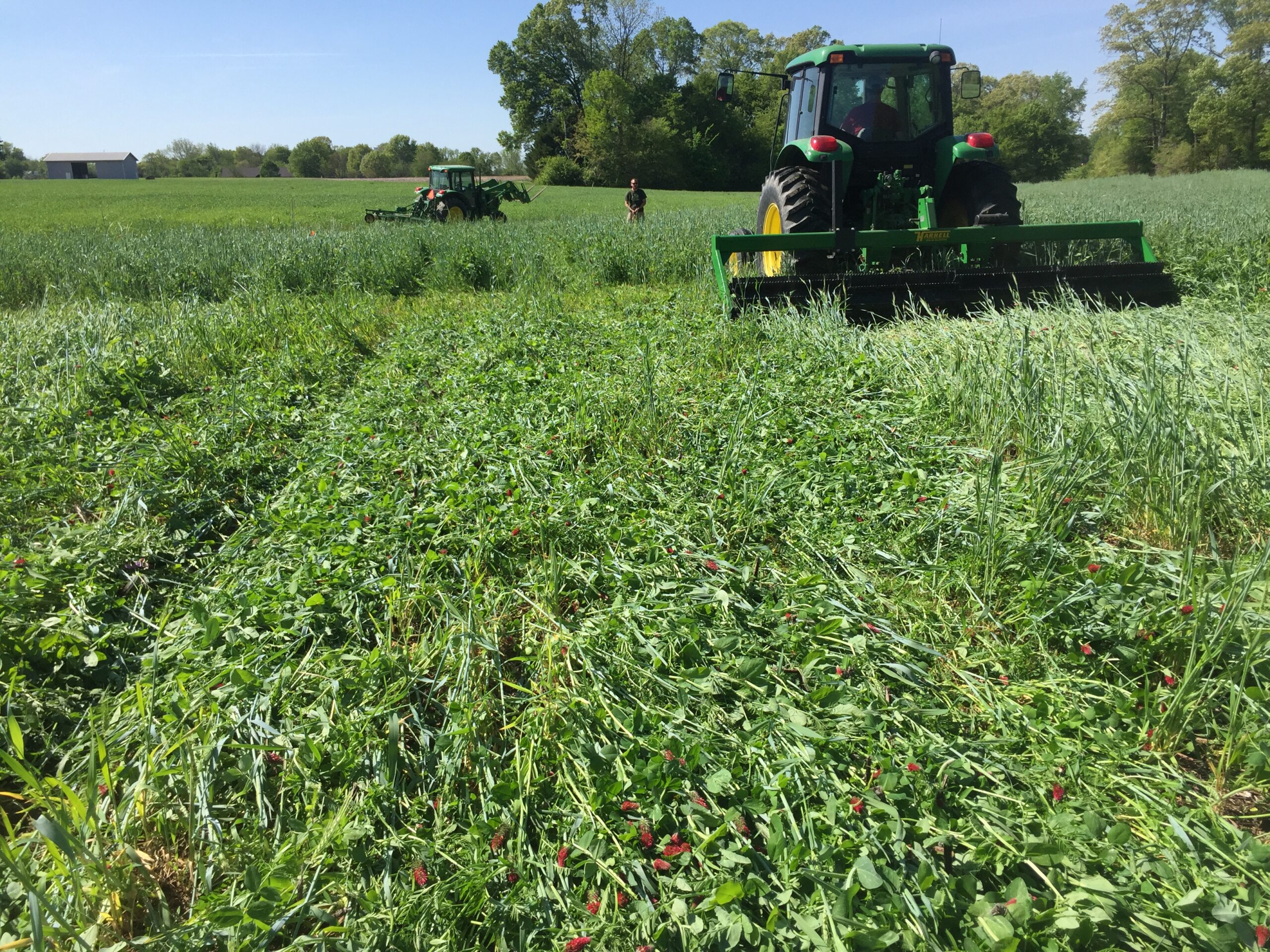 Cover crops can supply nitrogen (N) to the soil for the subsequent cash crops and this nitrogen credit may be successfully integrated into N management. The challenging question is how much of the N supplied by cover crops is available for the next cash crop. Unfortunately, there is not a simple answer to this question since several factors influence the N availability from cover crops. There are two primary considerations if the goal of planting cover crops is to contribute N to the soil: the proportion of species in cover stand and the timing of cover crop termination.
Cover crops can supply nitrogen (N) to the soil for the subsequent cash crops and this nitrogen credit may be successfully integrated into N management. The challenging question is how much of the N supplied by cover crops is available for the next cash crop. Unfortunately, there is not a simple answer to this question since several factors influence the N availability from cover crops. There are two primary considerations if the goal of planting cover crops is to contribute N to the soil: the proportion of species in cover stand and the timing of cover crop termination.
The proportion of species in the established cover stand is important because different species have different effects on N. Depending on the species of cover crop planted, soil N may be removed or supplied to the soil. Grass cover crops (e.g. cereal rye, annual rye, wheat, oats), which are referred to as “scavengers” take up nitrates from either residual N fertilizers or organic matter decomposition. So, grasses do not contribute a whole lot to the soil N since not all of the scavenged N is available for the next growing season. An established cover stand comprised of all or mostly grasses will not provide any significant N benefit. Hence, the recommended N rate for the cash crop should not be reduced. In contrast, legumes (e.g. clover, winter pea, hairy vetch) supply additional soil N through biological N fixation. A well-established legume cover crop stand would supply sufficient N to warrant reducing the recommended N rate. UT currently recommends a 60 to 80 lb N credit for a well established legume cover crop that has reached early bloom.
Generally, most growers plant multispecies of cover crops with less than 50% of biomass being a legume. Since legumes supply N, a good percentage of legume in cover stands is required to maximize plant available N for the next cash crop. A study in TN has shown that 30% legume biomass in cover stands can supply up to 43 pounds of N per acre when terminated late. It is critical to evaluate a stand of mixed species cover crops to determine actual legume proportion if some N credit is desired.
The second consideration is the timing of cover crop termination. There is a thin line between growing cover for extended periods to maximize plant available nitrogen (PAN) and yield loss of the cash crop. Generally, if the goal is to maximize PAN from a well-established legume stand, late termination may be a preferred choice. It is worth pointing out that late termination would result in delayed planting and increase the potential for yield loss of cash crops such as corn. If the legume is terminated early, those plants are smaller and have less time to fix N which can be released back into the soil. In contrast, well-established grass stands must be terminated early, especially if growing a cash crop with high N demand (e.g. corn). This strategy will not necessarily supply N but, rather prevent N from being tied up in the soil.
In summary, unique challenges presented by rising N fertilizer costs may present opportunities to rely on cover crops to meet some N need for the next cash crop. However, to integrate cover crops in N management, the cover crop should consist of at least 30% of established legume in the cover crop stand and should be terminated at early bloom. Currently, UT only recommends a N credit of 60-80 pounds per acre of plant available N following a single species well-established legume cover crop that has reached early bloom.


If a well-established legume cover crop has 30% legumes, what makes up the 70%? Any idea, for cotton (which should be the easiest to determine), if having a cover crop for more than three years can increase o.m.?
Clete,
Thanks for the great question. If your question is in regard to cover crop use in TN, then non-legumes (grasses and/or brassica) would make up the remaining 70%. Cover crops are able to increase organic matter by adding biomass to the soil, but this process takes time. Although cover crops particularly grasses can produce large amounts of biomass, several management practices (e.g. tillage) and factors influence the degree to which these cover crops will increase soil o.m. content. Significant increases in organic matter are rarely observed within the first four years of using cover crops.